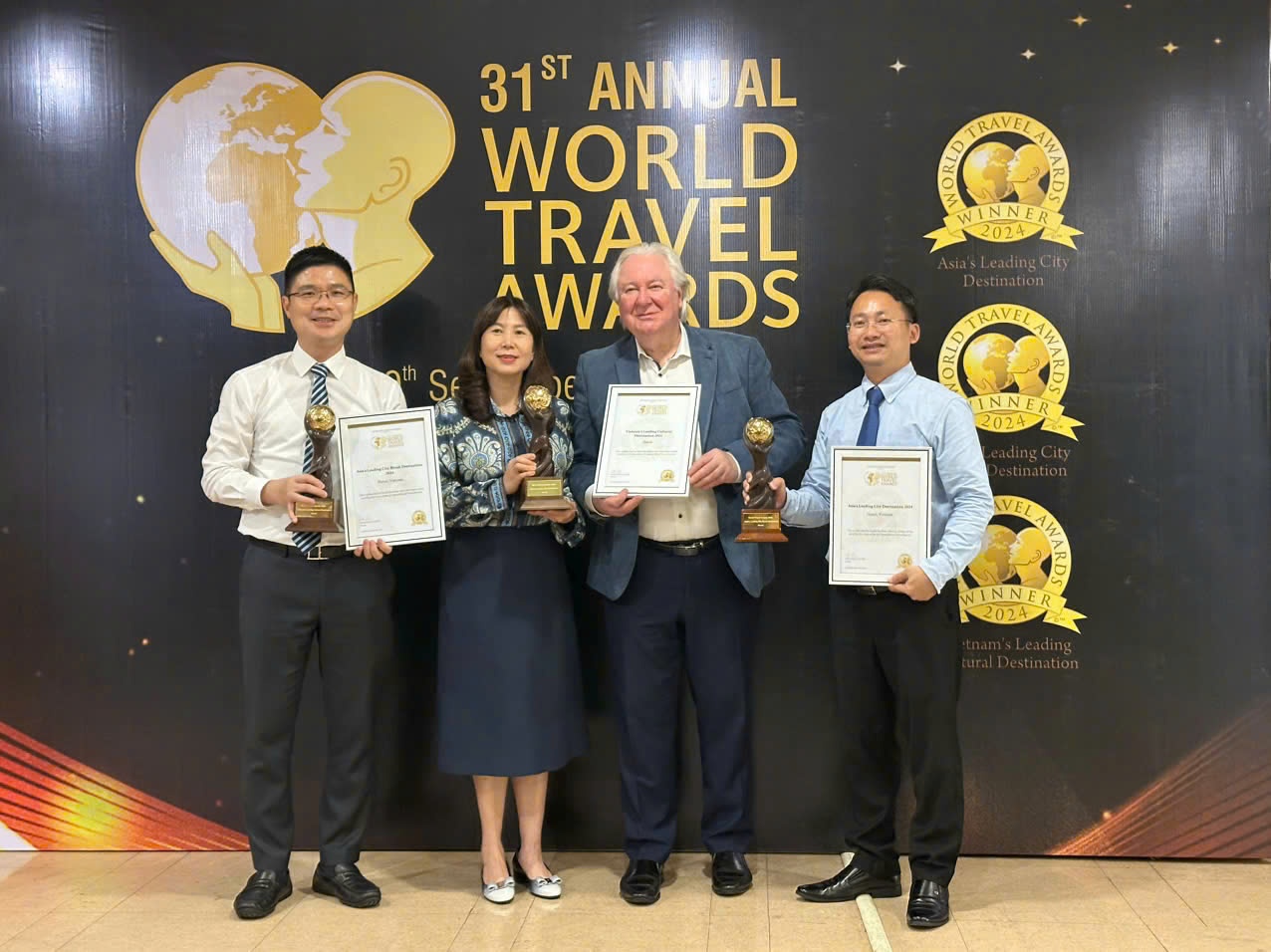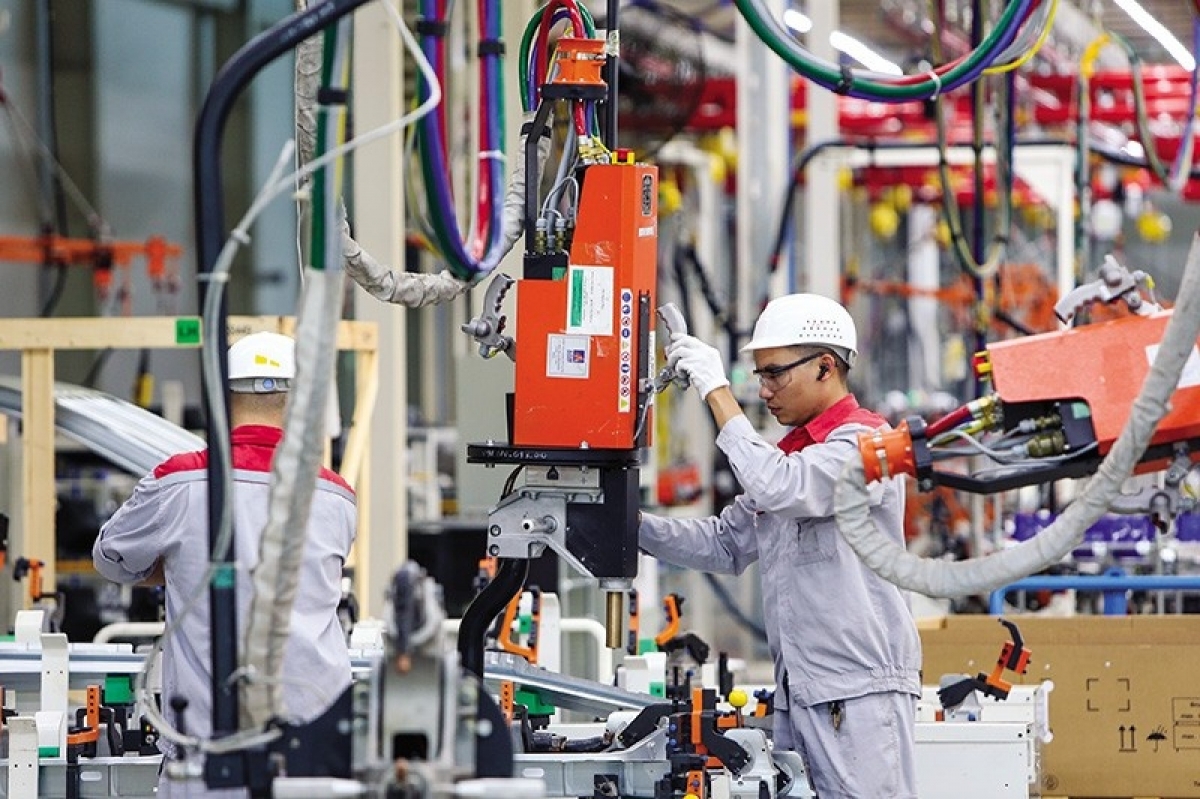INTERNATIONAL INVESTMENT
AND PORTAL
The cultural event series, Truc Bach Night, which ran from November 29 to December 1, was a highlight of Hanoi’s efforts in developing the nighttime economy with the launch of an exhibition in the Truc Bach Lake area.
 Hanoi shows its efforts in developing the nighttime economy through series of cultural activities, Photo Hanoi Tourism Department
Hanoi shows its efforts in developing the nighttime economy through series of cultural activities, Photo Hanoi Tourism Department
Inspired by the tram system that operated in Hanoi from 1901 to 1991, Tram Line No.6 features a nostalgic exhibition space with various themed carriages that recreate scenes from the capital’s past, and is expected to become an attractive nighttime cultural tourism product for international visitors.
Dang Huong Giang, director of the Hanoi Department of Tourism, said, “Hanoi has a rich system of scenic spots and cultural heritage. These are not only ideal locations for cultural and artistic activities, but also for developing sustainable nighttime tourism services, including food, entertainment, and experiential tourism.”
This decade’s plan for Hanoi calls for the development of tailored nighttime economic models for specific areas, aiming to make the city a safe, attractive, and branded destination for nighttime tourism. Following the pedestrian zone trial at Hoan Kiem Lake in 2016, Hanoi now has additional pedestrian streets in the districts of Ba Dinh, Tay Ho, Hai Ba Trung, and Son Tay town.
 Chairman of the World Travel Award Graham Cooke grants three tourism awards to Hanoi, Photo Hanoi Tourism Department
Chairman of the World Travel Award Graham Cooke grants three tourism awards to Hanoi, Photo Hanoi Tourism Department
In early 2024, the Hanoi Department of Tourism also approved plans to develop additional night tourism products linked to destinations such as the Quang An flower market in Tay Ho and the Quang Phu Cau incense village.
Alongside the development of pedestrian streets and weekend night markets, Hanoi is encouraging businesses to participate in the nighttime economy. Some bars and restaurants in the old quarter have been granted permission to stay open until 2am, while tour companies are collaborating with tourist sites to offer night tours at the Hoa Lo Prison, Temple of Literature, Imperial Citadel of Thang Long, and Hanoi Literature Museum, contributing to the increased number of domestic and international visitors to the capital.
Although the number of night tourism products has grown, Hanoi’s nighttime economy has yet to reach its full potential due to a lack of tourism products available after midnight. Tourism revenue and spending per visitor remain lower compared to many other destinations.
The nighttime economy refers to service activities occurring between 6pm and 6am the following morning, including shopping at markets, 24/7 convenience stores, culinary experiences, arts, music, entertainment programmes, festivals, events, and tourist attractions that do not open during the day.
Nguyen Tran Hoang Phuong, director of the Institute for Social Tourism Research Institute, cited examples of other countries to show the importance of the night economy.
“Night tourism generates $157 billion, about 20 per cent of the total tourism value in France. In Thailand, night tourism contributes around $63 billion, or 11 per cent of total tourism revenue. In Japan, Tokyo’s nighttime economy generates around $3.76 billion annually,” he said.
He explained that a tourist typically spends over $300 on a trip to Thailand, but is willing to spend an additional third to half of that amount to experience nightlife and entertainment activities.
“Due to a lack of policies to attract investment in nighttime tourism products, and the absence of dedicated night tourism zones, Hanoi and Vietnam’s nighttime economies have yet to reach their full potential,” Phuong assessed.
Phung Quang Thang, vice president of the Vietnam Travel Association and director of Hanoitourist, noted, “While the night economy offers many benefits, it also presents potential risks such as security issues, traffic safety, noise pollution, and waste.”
He suggested that Hanoi should review policies and legal frameworks related to the development of the nighttime economy, focusing on areas such as tourism zones, prioritised products, operating hours, licences, and the standards for businesses and individual enterprises involved in the nighttime economy.
“Hanoi could develop unique night tourism products, such as cultural tourism, nighttime food tours, and shopping tourism. The Old Quarter is a key area for expanding the night economy, and specific night tours combined with culinary experiences could attract more visitors,” he added.
According to the Hanoi Department of Tourism, the total number of visitors to Hanoi in the first 11 months of this year exceeded 25 million, a rise of 11.7 per cent compared to the same period in 2023. The aim for the full year is 30 million. International tourists reached nearly 5.7 million, surpassing the 2024 target of 5.5 million but behind the target of 7 million for the year, while domestic tourists reached more than 19.6 million.
This significant increase in visitor numbers has resulted in impressive revenue for Hanoi’s tourism sector, with total earnings in the first 11 months reaching nearly $4.2 billion, an increase of 17.8 per cent compared to the same period last year. The goal for the whole year is $5.4 billion.
 Hanoi's culture shines bright through night activities
Hanoi's culture shines bright through night activities
Hanoi officially launched its “Truc Bach Night” tourism programme on November 29, offering opportunities to explore the city's vibrant nightlife and cultural heritage.
 Night-time tourism offers up new engaging initiatives
Night-time tourism offers up new engaging initiatives
Hanoi has invigorated its nighttime offerings with a themed programme inspired by the subsidised economy era, offering an engaging blend of nostalgia and modernity.



















